Messier 27: Dumbbell Nebula
Picture of M27 captured in narrowband by Chuck Ayoub. Image source: [1]
The Dumbbell Nebula, also known as Messier 27, is a planetary nebula located in the constellation Vulpecula, about 1,360 light years away from Earth. It is one of the largest known planetary nebulae.
The first to describe it was Charles Messier, who discovered it in 1764 and included it in his famous extended catalog of celestial objects as object number 27. Being a planetary nebula does not imply that it has anything to do with planets, Messier 27 is one of the most impressive of all the sky. His name, Dumbbell, comes from the form he presents through a telescope, reminiscent of a dumbbell or dumbbell. The visible part of the nebula covers a size of about 6 minutes of arc in the sky, its age is estimated in about 4,000 years. Messier 27 is an excellent example of a gaseous emission nebula created when a star similar to the Sun runs out of nuclear fuel. The nebula is formed as the outer layers of the star are expelled into space, with a visible brightness generated by atoms excited by the intense, but invisible, ultraviolet radiation of the dying star.
The understanding of physics and the importance of Messier 27 was far beyond the science of the eighteenth century. Even today, many things remain a mystery about these bipolar planetary nebulae.
More details here: Messier 27
ESO image showing extended structure and central star. Image credit: ESO
This image is the beautiful byproduct of a technical test performed on some narrow band optical interference filters of the FORS1 instrument. They only allow light to pass through a small wavelength range and are used to isolate the emissions of certain ions and atoms. For this composition in three colors, a brief exposure was first made through a broadband filter, recording the blue light of the nebula. It was then combined with exposures through two interference filters in the light of doubly ionized oxygen atoms and atomic hydrogen. They were color coded as "blue", "green" and "red", respectively and then combined to produce this image showing the nebula structure in "almost real" colors.
Closeup of knots in M 27 taken by the Hubble Space Telescope. Image source: [2]
Image from the Spitzer Space Telescope. Image source: [3]
Image from a ground-based telescope at Westview Observatory in Cridersville, OH. Image source: [4]
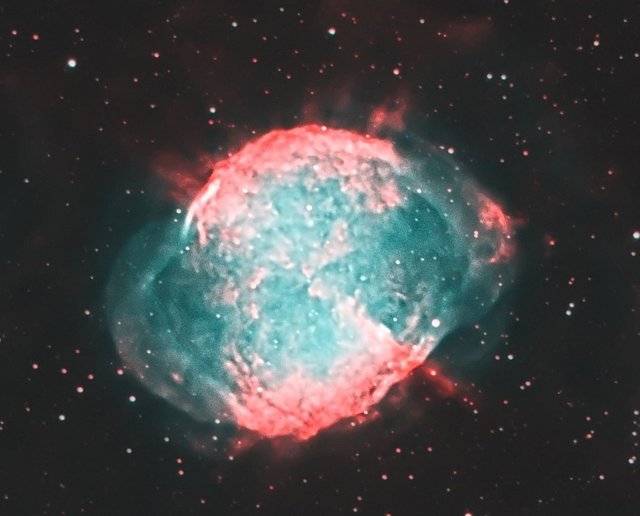
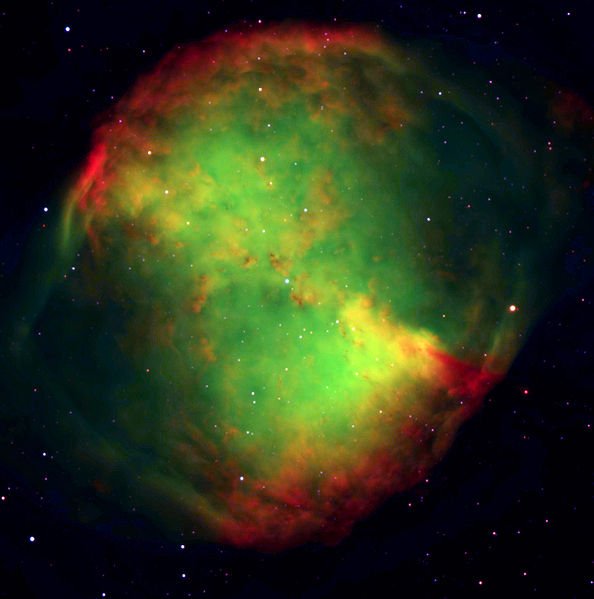
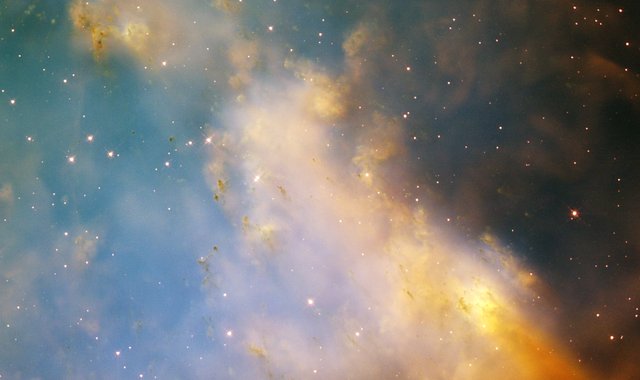
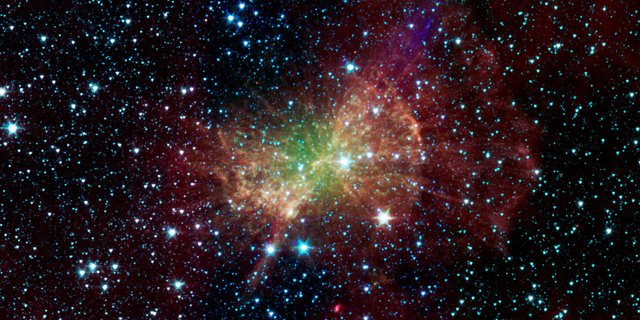
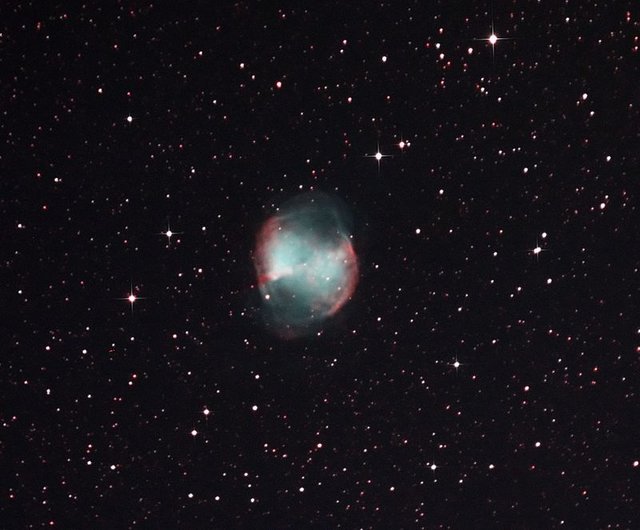

Thanks pcb maker : PCB manufacturing process